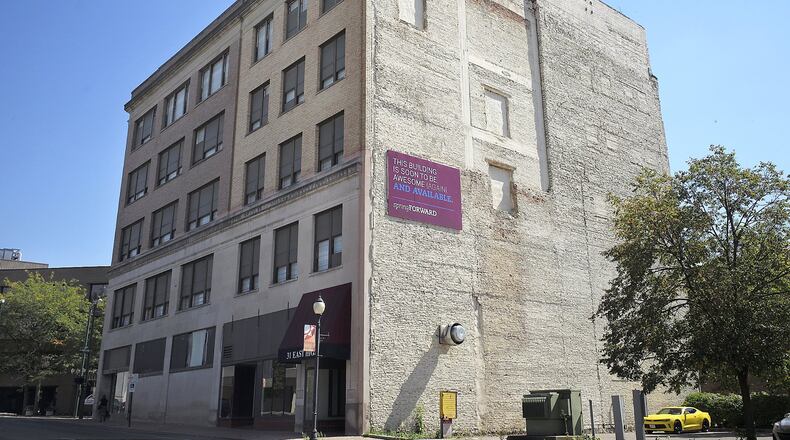RELATED: $4.8M raised for downtown Springfield redevelopment
“It gives it a level of respect in the community. It was kind of forgotten about,” Turner Executive Director John Landess said.
The recommendation came from the Ohio Historic Site Preservation Advisory Board. A building has to meet one of four criteria to be eligible for listing consideration, including architectural or historical significance.
The McAdams Building’s association with the Edward Wren Co., Springfield’s leading department store for much of the 20th Century, clinched its inclusion on the register according to Tom Wolf, Ohio History Connection communications manager.
The store occupied the property from 1924 to 1939. The interior of the five-story brick building still has features of the department store, including an open floor plan and concrete columns.
Wren’s moved to the Bushnell Building on East Main Street in 1939 and lasted there until 1984 when it merged with Block’s, closing in 1987.
READ MORE: $500K artist studios coming to downtown Springfield
The McAdams Building later housed a bank and other businesses after Wren’s left. It was set to be demolished before it was purchased in 2015 for $185,000.
Its placement on the National Register will open the door for state and federal historic tax credits. Landess said the organization should be able to redevelop the currently vacant McAdams Building into apartments in its upper three floors and up to three store fronts on the ground level.
“We will be able to redevelop in the next 18 months,” Landess said.
The Springfield Metallic Casket Co. was added to the National Registry in 2016, and Landess said the foundation hopes to add other buildings such as the former Lagonda National Bank Complex on East Main Street.
The National Register is the federal government’s official list of properties or districts deemed worthy of preservation because of their local, state or national historical significance.
The Springfield area has more such buildings than most towns of its size, Wolf said.
“Springfield, especially in the late 19th and early 20th Century, had a lot of money in industry and that resulted in a remarkable architectural legacy,” he said. “Springfield can be really proud of this.”
About the Author
